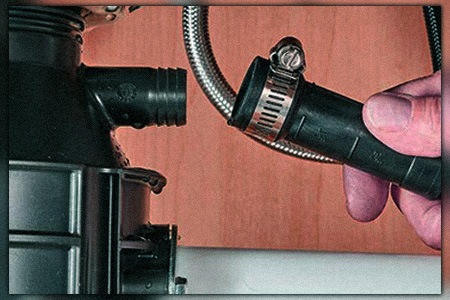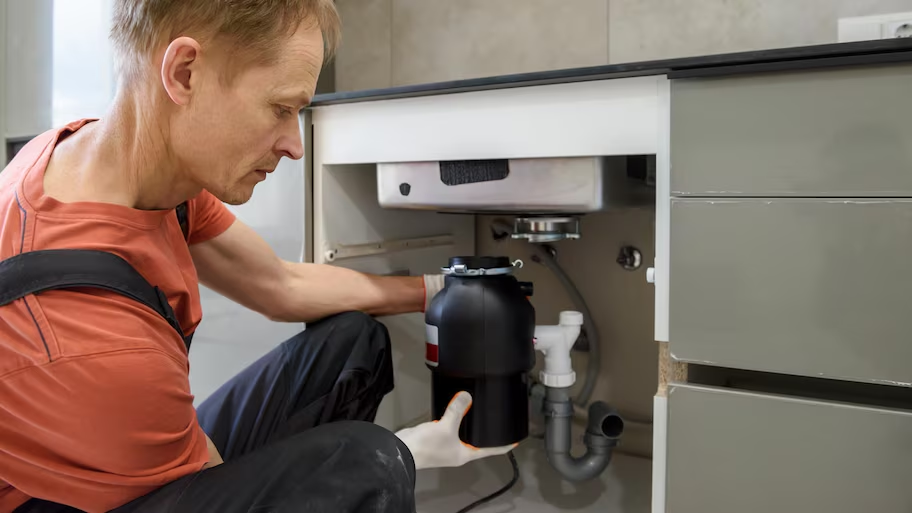We've discovered the article about Why Is My Garbage Disposal Leaking From the Bottom? below on the net and decided it made sense to share it with you over here.

Waste disposal unit are necessary cooking area appliances that assist in throwing away food waste successfully. However, a dripping waste disposal unit can be an irritating and untidy trouble to take care of. Fortunately, lots of leakages can be taken care of quickly with a couple of straightforward actions. In this post, we will talk about how to repair a leaking waste disposal unit efficiently.
Introduction
Garbage disposals are mounted under kitchen sinks and are made to shred food waste into smaller sized items, enabling it to pass through the pipes system easily. While these gadgets are generally dependable, leaks can happen gradually because of damage, loosened links, or damage to the device.
Step-by-Step Overview to Dealing With a Leaking Garbage Disposal
Switch off the Power
Before trying any repair work, ensure that the power to the garbage disposal system is turned off to prevent the risk of electric shock.
Locate the Leak
Identify the precise location of the leak and figure out the cause
Tighten Links
Make use of a wrench to tighten any type of loose connections between the disposal unit and the pipes system.
Replace Seals or Gaskets
If the leakage is because of worn seals or gaskets, eliminate the old parts and replace them with brand-new ones.
Patching Splits or Openings
For cracks or holes in the disposal device, use epoxy or an appropriate patching product to seal the damaged location.
Identifying the Source of the Leakage
Before attempting to repair a dripping garbage disposal, it is essential to recognize the source of the leak. This can usually be done via aesthetic evaluation or by carrying out basic examinations.
Visual Examination
Evaluate the waste disposal unit unit thoroughly for any type of signs of water leakage. Pay attention to areas around seals, gaskets, and link factors.
Testing for Leakages
One method to evaluate for leakages is by running water with the disposal system and checking for any type of visible indications of leak.
Usual Reasons For Leaks in Rubbish Disposals
Worn Seals and Gaskets
Seals and gaskets play a vital function in avoiding water from leaking out of the waste disposal unit. Over time, these elements can deteriorate, leading to leaks around the disposal device.
Loose Links
The connections between the garbage disposal and the pipes system can come to be loose with time, creating water to leak out throughout operation.
Splits or Openings in the Disposal Device
Physical damages to the waste disposal unit, such as cracks or openings in the real estate, can likewise result in leaks.
Tools and Products Needed for Taking Care Of a Dripping Waste Disposal Unit
Prior to beginning the repair service procedure, collect the necessary devices and products, including a screwdriver, flexible wrench, plumbing technician's putty, replacement seals or gaskets, and epoxy or patching material for repairing fractures or openings.
Examining the Garbage Disposal After Repair Work
Once the fixing is full, evaluate the waste disposal unit by running water through it to guarantee that the leak has been fixed.
Preventive Maintenance Tips to Avoid Future Leaks
To avoid future leaks, it is important to perform regular maintenance on your waste disposal unit. This includes keeping it tidy, avoiding putting non-food items or hard objects down the disposal, and occasionally looking for leaks or various other issues.
Conclusion
Finally, fixing a leaking waste disposal unit is a reasonably straightforward procedure that can be completed with fundamental devices and materials. By adhering to the actions laid out in this short article and practicing preventative upkeep, you can maintain your waste disposal unit in good working condition and avoid expensive repairs in the future.
What to Do About a Leaking Garbage Disposal
A leaking garbage disposal often goes unnoticed until you confront a sopping cabinet, a foul-smelling puddle, or an audible drip-drip-drip from the unit. The fix can be frustrating, too, because the leak can stem from a number of components in the system. Fortunately, with a little sleuthing, you can zero in on the leak and—depending on the exact location—stop the icky oozing and repair the component that caused it. Worst case scenario, if it turns out that the garbage disposal must be replaced, installing a new one is a reasonable do-it-yourself task for those with basic plumbing skills. Read on to keep the cash you’d otherwise hand over to a pro.
Prepare to find the leak
Prior to testing the garbage disposal for leaks, unplug it at the wall outlet and turn off the power from the breaker box to prevent electrical shock. Then insert a watertight sink stopper into your sink drain and wipe the unit dry with a clean cloth. In any handy container, mix a few drops of food coloring into a few cups of water, and pour the dyed water onto the sink stopper to help you locate the leak.
Investigate the source
the top, where the disposal meets the sink drain the side, where the dishwasher hose or main drain pipe connects to the disposal or the bottom of the unit Inspect each of these locations while gliding a light-colored rag over the unit; the dyed water will readily show on the rag and reveal the location of the leak. If a leak isn’t immediately apparent, remove the sink stopper and pour a few more cups of dyed water down the sink drain, then check for leaks again. Leaks near the top of the unit are more likely to show themselves while the sink is plugged, while side and bottom leaks are more noticeable while the sink is unplugged.
The metal sink flange that sits directly inside the sink drain is typically sealed around the top with plumber’s putty (a clay-like sealant) and then secured from under the sink with bolts. If the plumber’s putty deteriorates, or the bolts loosen, the flange can no longer form a watertight seal between the sink drain and the disposal—which could cause a leak at the top of the unit.
To reseal the leaky flange, you must first detach the garbage disposal. Start by loosening the screws securing the main drain pipe to the disposal, then loosen the screws in the metal clamp securing the dishwasher hose to the disposal and detach the drain pipe and dishwasher hose from the disposal. Loosen the screws in the mounting ring that connects the disposal to the metal mounting assembly beneath the sink, then pull down the disposal and carefully set it on a clean, dry surface. Loosen the bolts in the mounting assembly with a wrench, then pull down the mounting assembly and set it near the disposal.

Hopefully you enjoyed reading our part about Why Is . Thank you so much for taking a few minutes to read our article post. Are you aware of somebody who is fascinated about the topic? Do not hesitate to promote it. I am grateful for your time. Kindly check up our blog back soon.
Book Services